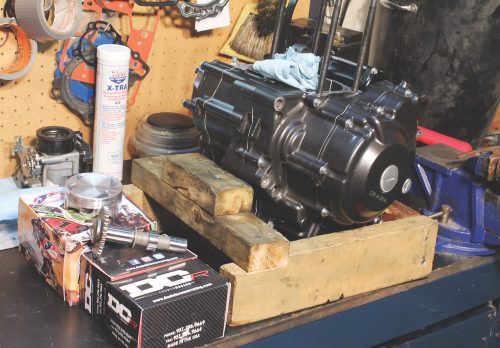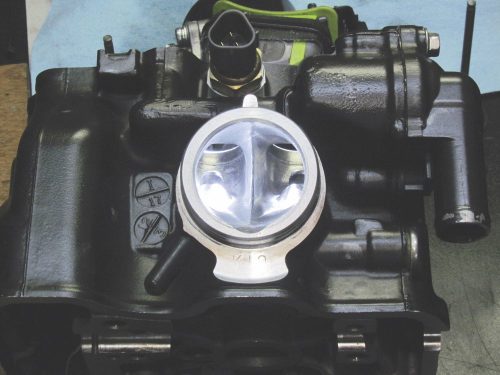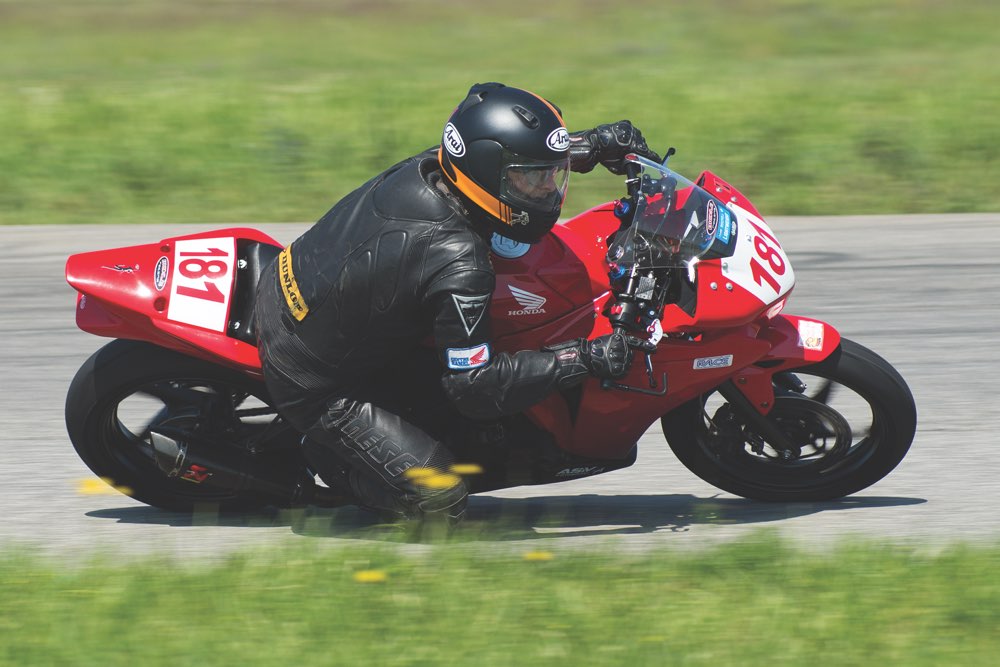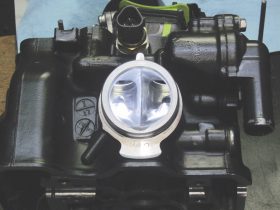Motorcycle racing is exciting to watch, but even more exciting to me are the unseen efforts taken behind the scenes to make a machine competitive. A long-time friend of mine, Jean-Pascal Schroeder, and I used to compete together when we were on the same team during endurance races, and I used to race against him when we were competing in the same race class as rivals.
 J-P has extended his racing career much longer than I have, and last season he raced a Honda CBR250R with a slightly modified engine, in the RACE SuperSeries 300 Production and Lightweight Production classes. The engine modifications consisted of a CBR300R crankshaft and piston, which bumped displacement to 286 cc from 249 cc. Combined with a mild porting job performed by yours truly, output, as measured on a rear-wheel dynamometer, went from 25 hp to just a touch above 30. Although those numbers seem unimpressive by supersport standards, they equate to a 20 per cent increase in output. This boost in power was enough to enable J-P to finish on the podium in several races. He also finished ahead of more powerful bikes, like the Kawasaki Ninja 300 and the Yamaha R3 in the CSBK Lightweight invitational races held at Canadian Tire Motorsport Park last season.
J-P has extended his racing career much longer than I have, and last season he raced a Honda CBR250R with a slightly modified engine, in the RACE SuperSeries 300 Production and Lightweight Production classes. The engine modifications consisted of a CBR300R crankshaft and piston, which bumped displacement to 286 cc from 249 cc. Combined with a mild porting job performed by yours truly, output, as measured on a rear-wheel dynamometer, went from 25 hp to just a touch above 30. Although those numbers seem unimpressive by supersport standards, they equate to a 20 per cent increase in output. This boost in power was enough to enable J-P to finish on the podium in several races. He also finished ahead of more powerful bikes, like the Kawasaki Ninja 300 and the Yamaha R3 in the CSBK Lightweight invitational races held at Canadian Tire Motorsport Park last season.
Next year, he plans to compete in the newly introduced CSBK Lightweight Sport Bike class, which is open to the Honda CBR250R and 300R singles, and CB500 and CBR500R twins; the Kawasaki Ninja 250, 300 and new 400; the KTM 390 models, and the Yamaha R3. That selection is going to provide some stiff competition for J-P, so he’s decided to enhance his CBR250R’s performance by further modifying the engine.
J-P has handed me a spare engine from another CBR250R race bike he owns, with the intention of bumping output to a whopping 38 hp at the rear wheel — or at least as close to that number as we can get. The modifications to this new engine will include the longer-stroke crankshaft from the CBR300R, a set of high-performance cams made by Daniel Crower Racing, a forged high-compression piston manufactured by JE that measures 78 mm (76 mm for the stock CBR250R and 300R), and stiffer clutch springs to handle the extra power. These mods bump engine displacement to a full 300 cc and raise the compression ratio to 13:1, from 10.7:1, requiring the use of high-octane pump gas and a colder spark plug.
We’ve enlisted the advice of fellow U.S. motojournalist Ari Henning, who has been building and racing CBR250Rs south of the border for a couple of years and has valuable experience with these engines. He’s the one who provided the shopping list of parts, as well as some helpful tips on building the engine.
 As I write this, the crankcase is bolted shut with the new crankshaft in place, but the top end is not yet assembled; building a race engine requires much more than just slapping parts together. While the cylinder head porting is complete, the valves need to be checked for clearance before final assembly. This includes checking the valve-to-piston clearance, checking the travel of the valves with the valve seals installed to make sure there is enough clearance between the valve keepers and valve seals with the higher-lift cams installed, and to check that the valve springs don’t bind due to the increased valve lift. Piston-ring end gaps must also be checked, and finally, before closing everything up, combustion-chamber squish must be checked and adjusted via base gaskets of different thickness. “Combustion-chamber squish” is the distance between the flat part of the piston and the flat part of the combustion chamber. Ideally, it is set to between 0.030” and 0.045” (thousandths of an inch), as this optimizes the flow of the fuel mixture as it compresses to allow for the most efficient combustion.
As I write this, the crankcase is bolted shut with the new crankshaft in place, but the top end is not yet assembled; building a race engine requires much more than just slapping parts together. While the cylinder head porting is complete, the valves need to be checked for clearance before final assembly. This includes checking the valve-to-piston clearance, checking the travel of the valves with the valve seals installed to make sure there is enough clearance between the valve keepers and valve seals with the higher-lift cams installed, and to check that the valve springs don’t bind due to the increased valve lift. Piston-ring end gaps must also be checked, and finally, before closing everything up, combustion-chamber squish must be checked and adjusted via base gaskets of different thickness. “Combustion-chamber squish” is the distance between the flat part of the piston and the flat part of the combustion chamber. Ideally, it is set to between 0.030” and 0.045” (thousandths of an inch), as this optimizes the flow of the fuel mixture as it compresses to allow for the most efficient combustion.
Once all of this is done, J-P will install the engine into the frame and send it to an engine tuner equipped with a dynamometer, who will set the air/fuel mixture until maximum power is attained on the dyno. Of all the steps in this process, this is the most critical: if the mixture is not right, you lose power, but even worse, it can lead to an engine meltdown. We are limited in what we can do with the fuel injection because the hardware, like an appropriate ECU, is hard to come by. The series limits modification to the EFI system to the addition of a Dynojet Power Commander. This unit alters the fuel-injection-pulse width, which, in turn, either leans out or enriches the air/fuel mixture.
I’m looking forward to J-P’s upcoming racing season, and with two previous seasons under his belt, we have lap time data we can compare to see if all of these modifications amount to anything. I’m betting they will.
Technical articles are written purely as reference only and your motorcycle may require different procedures. You should be mechanically inclined to carry out your own maintenance and we recommend you contact your mechanic prior to performing any type of work on your bike.












